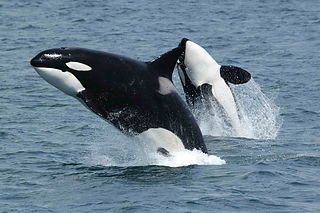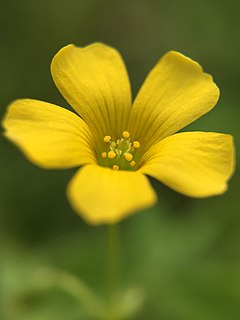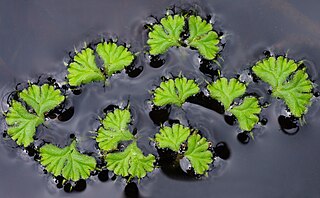 W
WIn biogeography, a taxon is said to have a cosmopolitan distribution if its range extends across all or most of the world in appropriate habitats. Such a taxon is said to exhibit cosmopolitanism or cosmopolitism. The extreme opposite is endemism.
 W
WBryum argenteum, the silvergreen bryum moss or silvery thread moss, is a species of moss in the family Bryaceae. It is one of the most common urban mosses of inner cities and can be easily recognized without a microscope.
 W
WCapsella bursa-pastoris, known as shepherd's purse because of its triangular flat fruits, which are purse-like, is a small annual and ruderal flowering plant in the mustard family (Brassicaceae). It is native to eastern Europe and Asia minor, but is naturalized and considered a common weed in many parts of the world, especially in colder climates, including British Isles, where it is regarded as an archaeophyte, North America and China, but also in the Mediterranean and North Africa. C. bursa-pastoris is the second-most prolific wild plant in the world, and is common on cultivated ground and waysides and meadows.
 W
WThe dog is a domesticated carnivore of the family Canidae. It is part of the wolf-like canids, and is the most widely abundant terrestrial carnivore. The dog and the extant gray wolf are sister taxa as modern wolves are not closely related to the wolves that were first domesticated, which implies that the direct ancestor of the dog is extinct. The dog was the first species to be domesticated, and has been selectively bred over millennia for various behaviors, sensory capabilities, and physical attributes.
 W
WFeral pigeons, also called city doves, city pigeons, or street pigeons, are pigeons that are descended from the domestic pigeons that have returned to the wild. The domestic pigeon was originally bred from the wild rock dove, which naturally inhabits sea-cliffs and mountains. Rock, domestic, and feral pigeons are all the same species and will readily interbreed. Feral pigeons find the ledges of buildings to be a substitute for sea cliffs, have become adapted to urban life, and are abundant in towns and cities throughout much of the world. Due to their abilities to create large amounts of excrement and to carry disease, combined with crop and property damage, pigeons are largely considered a nuisance and an invasive species, with steps being taken in many municipalities to lower their numbers or completely eradicate them.
 W
WIsolepis cernua is a species of flowering plant in the sedge family known by the common names low bulrush, slender club-rush, tufted clubrush, and fiberoptic grass. It is widespread, being native to many regions of the world, including parts of Australasia, Eurasia, Africa, and North and South America.
 W
WMontia fontana, commonly known as blinks or water blinks, water chickweed or annual water miner's lettuce, is a herbaceous annual plant of the genus Montia. It is a common plant that can be found in wet environments around the globe, from the tropics to the Arctic. It is quite variable in morphology, taking a variety of forms. It is sometimes aquatic.
 W
WOxalis corniculata, the creeping woodsorrel, also called procumbent yellow sorrel or sleeping beauty, resembles the common yellow woodsorrel, Oxalis stricta. It is a somewhat delicate-appearing, low-growing, herbaceous plant in the family Oxalidaceae.
 W
WParmelia sulcata is a foliose lichen in the family Parmeliaceae. It is very tolerant of pollution and has a cosmopolitan distribution, making it one of the most common lichens. It harbours a unicellular Trebouxia green algal symbiont.
 W
WPoa pratensis, commonly known as Kentucky bluegrass, smooth meadow-grass, or common meadow-grass, is a perennial species of grass native to practically all of Europe, North Asia and the mountains of Algeria and Morocco. Although the species is spread over all of the cool, humid parts of the United States, it is not native to North America. The Spanish Empire brought the seeds of Kentucky bluegrass to the New World in mixtures with other grasses. Poa pratensis forms a valuable pasture plant, characteristic of well-drained, fertile soil. It is also used for making lawns in parks and gardens and is common in cool moist climates like the Pacific Northwest, and Northeastern United States. When found on native grasslands in Canada, however, it is considered an unwelcome exotic plant, and is indicative of a disturbed and degraded landscape.
 W
WRicciocarpos natans is the only species in the genus Ricciocarpos, a genus of liverworts in the family Ricciaceae. It was formerly listed in 1759 as a species of Riccia by Linnaeus, but then assigned to a new genus of its own in 1829 by August Carl Joseph Corda.
 W
WSonchus asper, the prickly sow-thistle, rough milk thistle, spiny sowthistle, sharp-fringed sow thistle, or spiny-leaved sow thistle, is a widespread plant in the dandelion tribe within the daisy family.